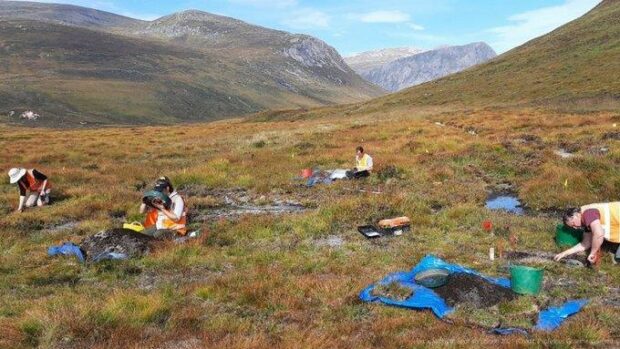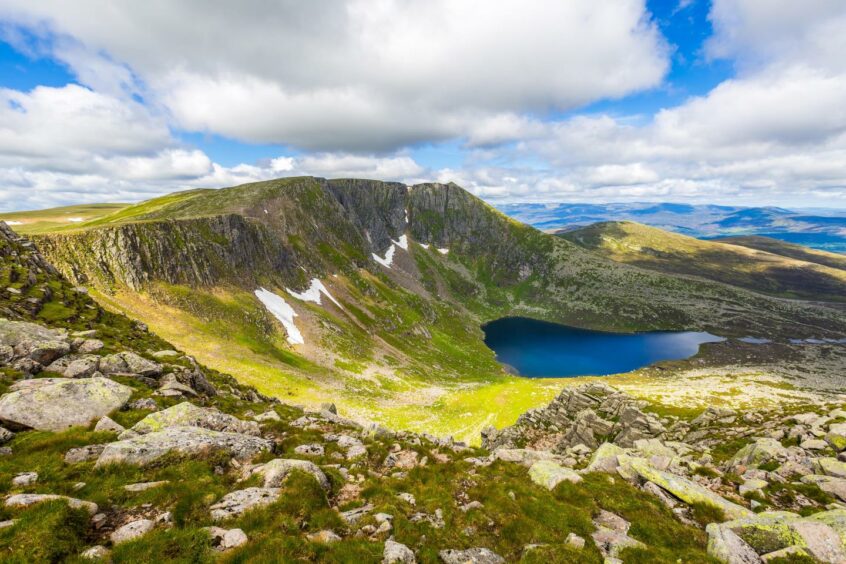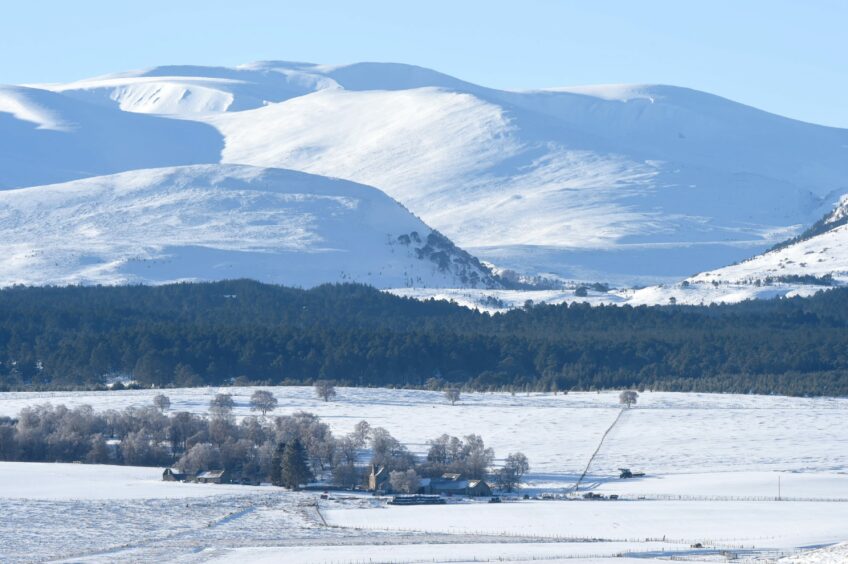A team of archaeologists searching for the ancient homes of hunter-gatherers in the Cairngorms may have discovered that even our ancestors tried to escape from the prehistoric midge.
Searching for microscopic clues, one of the Looking Up project’s aims is to consider the theory that snow covered areas gave respite from “biting insects”.
Students and experts from Dublin University are undertaking the project by finding rare fragments of stone-age tools.
Those tool fragments show evidence of where hunter-gatherers may have lived.
The areas being investigated are found high on the Cairngorm Plateau – where snow lasts longest each year.
It is believed that animals, and perhaps even humans, were attracted to the areas as the snow proved cool and gave respite from insects.
8,000 years ago, small groups of hunter-gatherers made temporary camps in the Cairngorms, leaving behind traces of their stone tools 🏹
How do you begin to find these tiny fragments in the UK's largest national park? Experts from @HunterUcd have a plan: https://t.co/YOMOg0Jnao pic.twitter.com/gavjUimEMN
— Dig It! (@DigItScotland) March 12, 2022
During the project, experts and students will test that theory – looking to find both evidence of the animals, and the tools of the hunters who stalked them.
Professor Graeme Warren of the school of archaeology at University College Dublin, said: “We think they (snow covered areas) may also have been good places for hunters to target animals.
“If we’re right, we may find more ancient hunter-gatherer sites like those (we already know about) at Chest of Dee, Caochanan Ruadha and Sgòr an Eòin here.”
More than 8,000 years ago, Scotland was home to groups of hunter-gatherers.
Evidence of their existence mostly comes from the lowlands of Scotland but the Looking Up project is hoping to further develop knowledge of how these people lived in Scottish mountains.
Prof Warren added: “Finding Mesolithic sites inland, and especially in mountain landscapes, is very challenging.
Did our ancestors enjoy nights in the Cairngorms?
“However, ongoing excavation and survey since 2013 on Mar Lodge Estate, managed by the National Trust for Scotland, has shown that hunter-gatherers were living in valleys high in the Cairngorm mountains in the Mesolithic period.”
At the Chest of Dee, excavation revealed that hunter-gatherers had repeatedly returned to a site near the junction of the River Dee and Geldie Burn over many thousands of years.
He continued: “At Caochanan Ruadha, above the Geldie Burn, archaeologists excavated a very small site with a tight scatter of stone tools around an ancient fire setting.”
Findings from the site showed that the precise way in which the tools were distributed may have meant a small structure was on the site.
“We think this was a small tent that might have held no more than two or three people and was probably only occupied for a night or two at about 6200 BC,” he explained.
In 2021, a team from University College Dublin started excavation of another Mesolithic site at Sgòr an Eòin.
The search for small stone tools
Further work is planned for 2022 and 2023.
Prof Warren went on: “Although sites such as these are rare, we know enough to suggest that hunter-gatherer settlement of the Scottish mountains was varied in character and quite extensive in scale.
“We see use of mountain landscapes through much of Mesolithic Europe, with sites also found high in the Alps or the Norwegian Highlands.
“Mesolithic sites in Highland regions, which can only be identified through the presence of small stone tools where peat has been eroded, are very hard to find.
“As such we are only beginning to understand the details of how hunter-gatherer lives were entwined with the Scottish mountains.”


